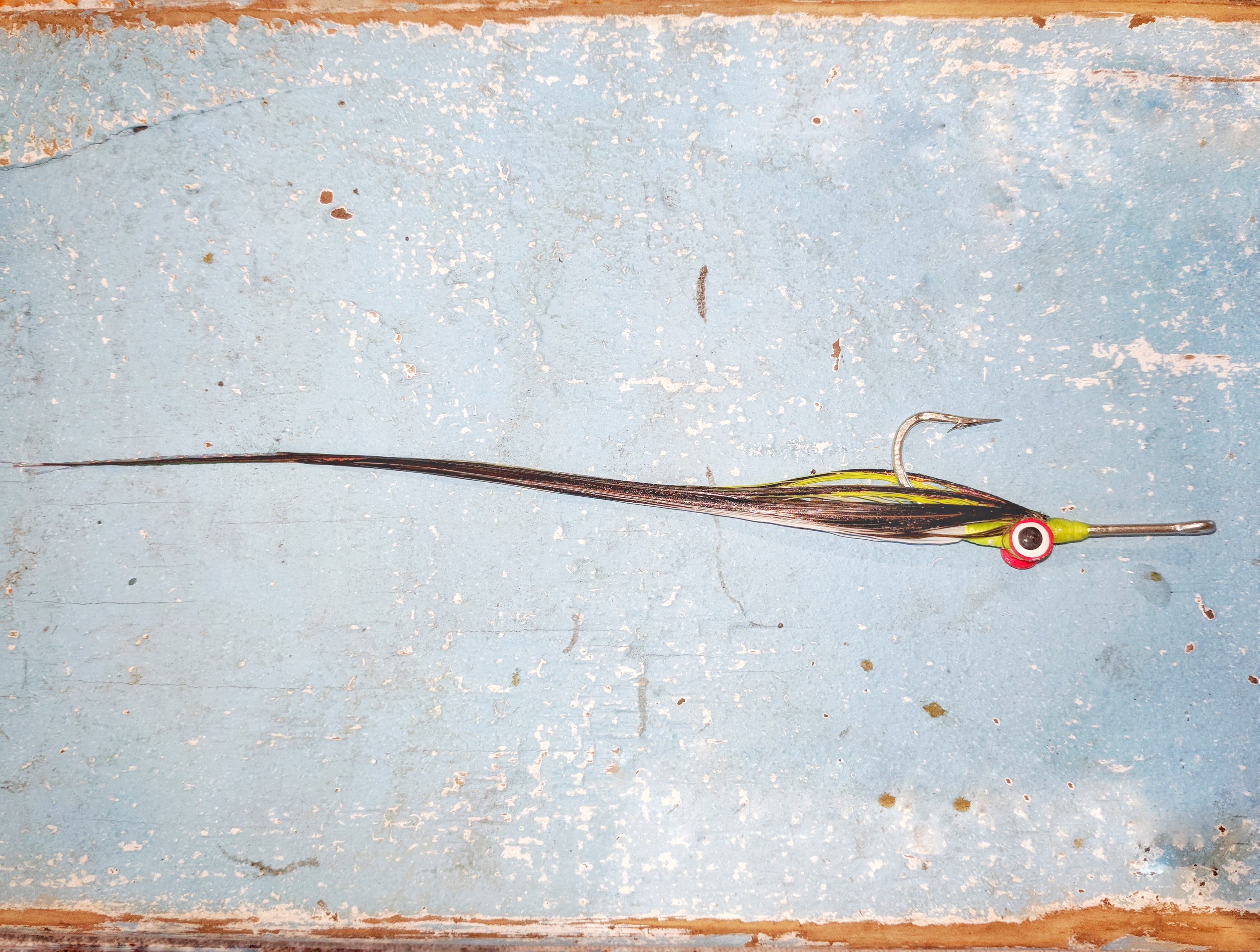From Atlantic City to Maine, the striper bite is on fire right now. Fly fishing the surf, tidal flats, and the occasional up-river run of schoolies is a longtime summer tradition here on the East Coast, and veterans of this sport will tell you that sparsely-tied bucktail streamers tend to produce the most consistent takes from “keeper” bass year after year: this is especially true for traditional saltwater patterns like the Clouser Minnow, a streamer that uses oversized dumbbell eyes to deliver the pattern to voracious fish deep in the water column.
In my opinion, the traditional “deep” Clouser tied in chartreuse over white is absolutely lethal in a variety of fishing conditions: in fact, I’d go as far as to say that it’s my all-time favorite saltwater fly. Unfortunately, in waters like Connecticut’s Mieg’s Point (at Hammonasset Beach State Park), stripers are often looking for a pattern that’s even more sparse than a traditional Clouser. Why? Because they’re eating sand eels, not minnows!
Over the past three years, I’ve developed a pattern I call the “Hammo Flatwing” (Hammo is the local nickname for Hammonasset, one of the better coastal fly fishing waters in Southern CT). This pattern is tied far back on the hook shank — a measure which provides some insurance against being bitten off by bluefish — and is super, super sparse. I’ve developed one version with dumbbell eyes to be fished on an intermediate line, and another version with a standard streamer “head” (using stick-on eyes) to be fished on a length of T-14 level line.

If you fly fish waters in which stripers, blues, and even Albies are crushing bait balls (or if one of them vomits up a sand eel-like critter), you should fish the Hammo Flatwing.
To tie the Hammo Flatwing, you will need:
- Super Glue (Or Loon UV Fly Finish – Thin)
- Large white bucktail (two sparse bunches)
- Large chartreuse bucktail (one sparse bunch)
- Large Olive saddle hackle (two feathers)
- Peacock sword
- 140 to 210 thread in chartreuse or yellow
- Large to XL Dumbbell Eyes (red)
- Daiichi 2457S
- Micro flashabou (Opal)
- Krystal flash
How to Tie the “Hammo Flatwing”
Step 1. Make a thread base at the rear 1/5th of the hook, directly “above” the barb of the hook. Do not extend this up towards the eye!
Step 2. Affix the large dumbbell eyes on top of the hook shank, and apply super glue.
Step 3. Add 3 to 5 pieces of flashabou and crystal flash. Do not double these over, as we’re looking for length. 
Step 4. Take a 1/4 pencil-sized clump of the longest white bucktail fibers; cut these remove the but ends, and secure these atop the flash on the hook shank.
Step 5. Take a second 1/4 pencil-sized clump of the longest white bucktail fibers; cut these and remove the butt ends, making the clump as sparse as possible without losing too much volume. Secure these fibers in front of the dumbbell eyes and add a dab of superglue. Once these are in place, pull them down to behind the eyes and fix them into position with four or five tight wraps of thread, adding superglue as you go.
Step 6. Rotate/invert the hook, then tie in a sparse clump of chartreuse bucktail (with approximately the same density as both clumps of white bucktail combined) right behind the dumbbell eyes. Secure this with superglue. 
Step 7. Tie in two (paired) hackles. Try to select the thinnest hackles you have available.
Step 8. Tie in 5 to 8 long strands of peacock sword. Secure this with glue.
Step 9. Smooth the head of the streamer using several touching wraps of thread. Go over these wraps with UV or super glue. Once dry, run this streamer through hot water, and remove any stray strands of bucktail or flash. When finished, the streamer should measure approximately 7 inches from the hook eye to the tips of the hackles.
Follow Vince on Instagram at @vindianabones!
https://postflybox.com/blog/2018/10/18/invest-in-what-you-love-equity-crowdfunding-and-why-were-doing-it/
https://postflybox.com/blog/2018/07/11/swingin-for-schoolies/
https://postflybox.com/blog/2018/05/01/is-it-spring-yet-early-season-necessities-for-cold-water-angling/
https://postflybox.com/blog/2018/01/26/tying-for-stripers-a-k-a-all-about-the-bass-no-treble-hook/
New England native and PhD student at the University of Michigan. I throw heavy streamers on sinking tips. Quality over quantity, any day of the week.





